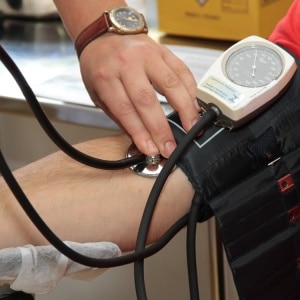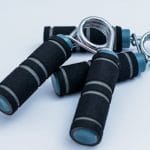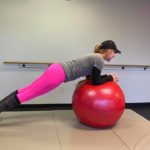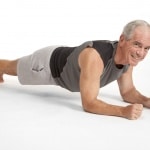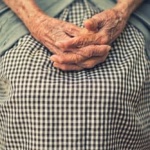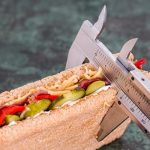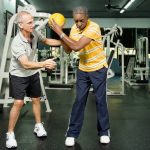 January 2023
January 2023
How to Get a Grip on Better Health
For decades, handgrip strength (HGS), measured on a dynamometer, not a handshake, has been used as a proxy for overall strength. It is considered a “strong predictor of general health status, overall morbidities, all-cause mortality, and exceptional[longevity.]” Since we lose muscle mass and strength as we age, HGS has been used to identify the rate of such losses and how it relates to physical decline.
Interestingly, HGS also correlates with knee extension (quadriceps) strength and therefore “predicts mobility and balance disorders, fracture risk, [the performance of] activities of daily living” and even decreased engagement in social and leisure activities. In other words, HGS is a good marker of health and fitness.

Some Finnish researchers evaluated the polygenic risk scores (PRS) for HGS to see if they predicted muscle strength, functional capacity and disability outcomes. Using HGS data originally collected between 2006 and 2010 on 429 women from their Finnish Twin Study on Aging, they tested the strength of the quadriceps and calf muscles, the Timed Get-Up-and-Go, and activities of daily living scores more recently. They also created the PRS in light of modern genetics testing.
They found that the PRS HGS predicts variation in the HGS and the lower body suggesting that the “genetic inheritance of muscle strength could be a noteworthy predictor of functional capacity and further disabilities.”
In sum, “Knowledge about genetic susceptibility could be used to improve personalized risk prediction.”
MSSE Nov. 2022
Does a Personalized Exercise RX Really Work?
As with many advances in medicine, with a drive to personalize treatment according to one’s genetic contribution to a particular cancer, exercise prescription is starting to aim for precision. To the extent that a generic exercise prescription, e.g. walk at this speed for this distance to accomplish this result, is supposed to work for all, it’s a demotivator when it doesn’t work for you. Why some folks derive a benefit from a specific exercise program while others do not is the question a group of researchers from Canada attempted to answer.
Based on 3 randomized controlled trials conducted in their lab, they compared the individual results to exercise programs designed to determine (1) the effects of a diet- or exercise-induced weight loss and exercise without weight loss on subcutaneous fat, visceral fat, and insulin sensitivity in overweight/obese people; (2) the separate effects of exercise amount and intensity on abdominal obesity and glucose tolerance in middle-age abdominally obese subjects; (3) the combined effects of resistance and aerobic exercise compared with either modality alone on risk facts for disease and disability in sedentary older people with abdominal obesity.
Ultimately what they found was that “individual variability in response to a given dose of exercise can be …misguided…[and that] few individuals achieved improvements in commonly measured cardiometabolic risk factors directly attributable to exercise levels” as expected.
Basically, this review of their own studies suggests that “practitioners use caution when attributing benefit or variability” to the exercise prescriptions they write for individuals. After all, we’re all just a study of one.
MSSE Nov. 2022
Tid Bits
My grandpa drank it daily over 60 years ago. Finally, scientists have confirmed that 1 cup of prune juice actually works. More than 80 chronically-constipated people were provided either real prune juice or a ‘similar-tasting placebo drink’ every day for 8 weeks. After only 3 weeks, the real pruners had reported “fewer hard and lumpy stools” than did placebo drinkers. Grandpa also said it tastes good. Harvard Men’s Health Watch Jan. 2023
Like 8 glasses of water/day, the 10,000 steps/day myth lives on. Promoted by a Japanese pedometer maker in 1965, it has held water for nearly 60 years. However, a recent study (JAMA Neurology, Sept. 2022) found that even 3,800 steps/day is linked to a lower risk of dementia; this benefit increased up to about 9,800 steps/day after which the benefits no longer accrued. So, 10,000 is still a worthy goal but, better still, those who exercised at higher intensities during their most active 30 minutes/day – like >40 steps/minute – got the most bang for their bucks. Proof again that taking STEPS for fitness is a good investment.
Music might be the key to sucking wind. A study evaluated “whether auditory distraction with music mitigates exertion dyspnea”, or lessens the discomfort of breathing hard during high-intensity exercise. They had 22 active twenty-somethings perform two 5-minute cycling efforts at close to their maximal abilities and an 8-km cycling time trial in 2 conditions: with ambient laboratory noise or self-selected music. As expected, they found music “mitigated the sensation of dyspnea and changed the accretion of dyspnea [breathlessness] per unit increase in [ventilation] leading to a higher self-selected workload”. Furthermore, music helped “improve exercise tolerance and performance”. Mind you, that’s self-selected music so heavy metal works as well as classic rock or opera, if you must. MSSE Nov. 2022

